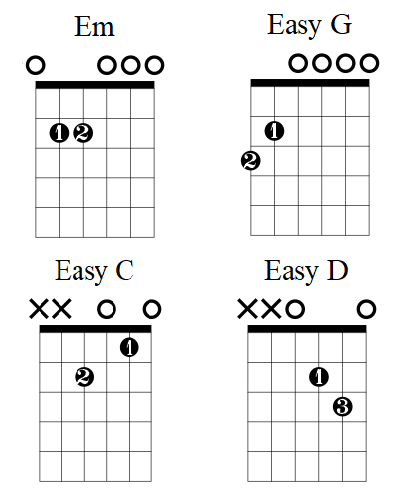

The thumb position is the main element in getting all chords sound right on the guitar. This places the arm and hand in a more natural position and allows you to do bigger stretches with less pressure. Place the guitar on your left leg (or right if you are a leftie) and hold the guitar neck up. Hold your guitar like a classical guitar player These tips can help out a lot with both issues.ġ. The challenge with any barre chord shape is to get the barre right and avoid putting a lot of pressure in your hand.
#B minor chord guitar full#
But the chord still sounds full and in some situations, you don’t need the high E string ringing out anyways.įor a better insight and detailed explanation of this chord shape have a look at this video:

On the downside, however, it’s easy to accidentally block the high E string with your ring finger barre. This type of barre with your ring or pinky requires a bit of strength to get right, but it’s usually a faster way to grab the chord shape and also it’s easier to get the chord clean and avoid the 3 finger cluster on the 4th fret. Play softly all the strings and check for buzzes.Put your ring finger or pinky, depending on what feels best for you, as a barre on the 4th freet for the D, G, and B string.Put your index finger on the 2nd fret of the A string.The second fingering of this shape is probably easier for most beginner guitarists. Especially the 4th fret of the D string is a bit challenging since your finger is forced to stay not as close to the fret as you would normally place it. On the downside, having your 3 fingers compressed in the 4th fret can be a bit tricky. The advantage of this shape is that all strings, inducing the high E, ring out. You’ve moved all of the notes in an open A major chord up 2 frets, or 1 full step (each fret is a half step), from an A chord to a B guitar chord. Imagine an A major chord and take that shape 2 frets up the neck, then visualize your index finger in the role of a capo and place it firmly on the second fret while fingering the A major shape with the other 3 fingers.

Try to think about this fingering like this. Strum gently and make sure all of the notes ring out.Put your fourth finger (pinky) on the 4th of the B string.Put your third finger (ring) on the 4th fret of the G string.Put your second finger (middle) on the 4th fret of the D String.Put your first finger (index) on the 2nd fret of the A string as a barre, holding down the A, D, G, B, and E string.For the first shape, use the following fingering: There are 2 ways to play this B major shape. The tricky part is getting the barre right and heaving all the notes ring out, but you will find it easier than expected with the help of some tips listed below. If you are new to the concept then these shapes can be a small challenge, but nothing that cannot be overcome with some practice. The first thing to keep in mind about barre chords is that, when playing them, the index finger takes the role of the guitar nut and holds down more than 1 string. This particular shape and position make it easy to go from open chords, suppose A major, to B Major in an instant. The most commonly used chord shape of B Major is the barre chord with a root on the 2nd fret of the A string.


 0 kommentar(er)
0 kommentar(er)
